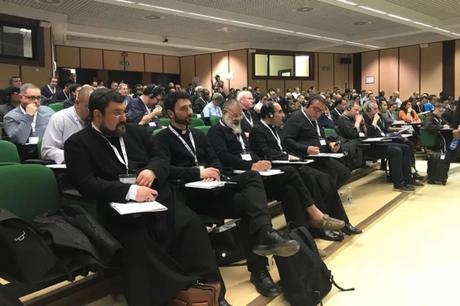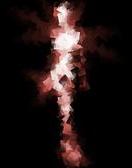Desde el punto de vista científico
From the scientific point of view
Los trastornos disociativos implican una ruptura en los procesos de memoria, identidad, percepción y/o conciencia. Dentro de ellos encontramos el trastorno de trance y posesión, causado por una experiencia impactante que ha generado mucho sufrimiento en la persona.
Trastorno de trance y posesión: ¿qué es?
El trastorno de trance y posesión es un tipo de trastorno mental clasificado como un subtipo de Trastorno Disociativo (de conversión)m en la Clasificación Internacional de Enfermedades (CIE-10). En el DSM-IV-TR (Manual Diagnóstico de los Trastornos Mentales), el trastorno de trance y posesión se denomina “Trastorno disociativo de trance”.
Los trastornos disociativos implican una ruptura o desconexión en los procesos de memoria, conciencia, identidad y/o percepción. Es decir, se produce una falta de continuidad (o desconexión) entre los pensamientos, las acciones, la identidad y los recuerdos.
En el trastorno de trance y posesión se incluyen solo estados de trance involuntarios o no deseados, y que además tienen lugar fuera de situaciones religiosas o culturalmente aceptadas. Este trastorno se da más típicamente en unas culturas que en otras (por ejemplo en las culturas latinoamericanas).
¿Qué no es?
El trastorno de trance y posesión excluye todos aquellos estados relacionados con: esquizofrenia, intoxicación por una sustancia psicoactiva, síndrome postconcusional, trastorno orgánico de la personalidad y trastornos psicóticos agudos y transitorios. Es decir, si existe alguno de estos cuadros psicopatológicos, no podrá diagnosticarse un trastorno de trance y posesión.
Dissociative disorders involve a rupture in the processes of memory, identity, perception and/or consciousness. Among them we find trance and possession disorder, caused by a shocking experience that has generated much suffering in the person.
Trance and possession disorder: what is it?
The trance and possession disorder is a type of mental disorder classified as a subtype of Dissociative (conversion) disorder in the International Classification of Diseases (ICD-10). In the DSM-IV-TR (Diagnostic Manual of Mental Disorders), trance and possession disorder is referred to as “Dissociative trance disorder”.
Dissociative disorders involve a breakdown or disconnection in the processes of memory, consciousness, identity and/or perception. That is, there is a lack of continuity (or disconnection) between thoughts, actions, identity and memories.
Included in trance and possession disorder are only involuntary or unwanted trance states, and also occurring outside of religious or culturally accepted situations. This disorder is more typical in some cultures than in others (e.g. Latin American cultures).
What is it not?
The trance and possession disorder excludes all those states related to: schizophrenia, intoxication by a psychoactive substance, post-concussional syndrome, organic personality disorder and acute and transient psychotic disorders. In other words, if any of these psychopathological conditions exist, a trance and possession disorder cannot be diagnosed.

Causas
Las causas que originan el trastorno de trance y posesión suelen ser experiencias traumáticas que han implicado un gran sufrimiento psicológico, ya sea agudo o prolongado, a la persona que padece el trastorno.
Aparece sobre todo en mujeres adolescentes con conflictos psicológicos, disfunciones familiares, dificultades en las relaciones interpersonales y con una historia de abuso, maltrato o carencias afectivas importantes.
Para poder diagnosticar el trastorno de trance y posesión, es importante descartar otras posibles causas no psiquiátricas, como por ejemplo trastornos neurológicos (tumores cerebrales, epilepsia,…) y el consumo de sustancias psicoactivas.
Por otro lado, no se diagnostica un trastorno de trance y posesión cuando los síntomas del mismo son “normales” dentro del contexto cultural y religioso de la persona que lo manifiesta (es decir, cuando se pueden “entender” los síntomas dentro de ese contexto, religión o práctica cultural).
The causes that originate the trance and possession disorder are usually traumatic experiences that have involved great psychological suffering, either acute or prolonged, to the person who suffers the disorder.
It appears mainly in adolescent females with psychological conflicts, family dysfunctions, difficulties in interpersonal relationships and with a history of abuse, maltreatment or important affective deficiencies.
In order to diagnose trance and possession disorder, it is important to rule out other possible non-psychiatric causes, such as neurological disorders (brain tumors, epilepsy, etc.) and the use of psychoactive substances.
On the other hand, a trance and possession disorder is not diagnosed when the symptoms of the disorder are “normal” within the cultural and religious context of the person manifesting it (i.e. when the symptoms can be “understood” within that context, religion or cultural practice).

Síntomas
En el trastorno de trance y posesión, se producen una serie de síntomas característicos. Por un lado, se produce una pérdida temporal del sentido de la identidad y de la plena conciencia del entorno. Por otro lado, la atención y la conciencia del entorno pueden limitarse a uno o dos aspectos inmediatos y concretos.
La persona que lo sufre también manifiesta un lenguaje raro, ilógico o incoherente, y actúa como poseída por otra persona, por un espíritu o por una fuerza “sobrenatural”. Manifiesta también un conjunto de movimientos, posturas y gestos particulares y muy expresivos.
Además, la persona que padece el trastorno siente un importante malestar psicológico, o se produce un deterioro global en su funcionamiento.
Symptoms
In trance and possession disorder, a number of characteristic symptoms occur. On the one hand, there is a temporary loss of a sense of identity and full awareness of the environment. On the other hand, attention and awareness of the environment may be limited to one or two immediate and specific aspects.
The sufferer also manifests a strange, illogical or incoherent language, and acts as if possessed by another person, by a spirit or by a “supernatural” force. It also manifests a set of particular and very expressive movements, postures and gestures.
In addition, the person suffering from the disorder feels a significant psychological discomfort, or there is a global deterioration in their functioning.
 The International Association of Exorcists is a Roman Catholic organization which was founded in 1990 by six priests including the world-famous exorcists of Rome, Father Gabriele Amorth and Father Jeremy Davies. Its statutes were approved by the Roman Catholic Church on June 13, 2014.
The International Association of Exorcists is a Roman Catholic organization which was founded in 1990 by six priests including the world-famous exorcists of Rome, Father Gabriele Amorth and Father Jeremy Davies. Its statutes were approved by the Roman Catholic Church on June 13, 2014.
Estado de trance y estado de posesión
Dentro del trastorno de trance y posesión, debemos diferenciar dos tipos de estados que pueden producirse: el trance y la posesión. Así, mientras que durante el estado de trance la “pérdida” de la identidad habitual que se produce no se asocia a la aparición de identidades alternativas, en el estado de posesión aparecen una o más identidades distintas y alternativas. Estas identidades, además, presentan movimientos, recuerdos y actitudes característicos.
Otra diferencia entre ambos es que en el estado de trance la actividad que desarrolla el individuo no es compleja (por ejemplo corre, se cae, presenta movimientos convulsivos, etc.), y en cambio en el estado de posesión las actividades sí son complejas (por ejemplo la persona mantiene conversaciones coherentes, manifiesta gestos característicos, expresiones faciales acordes con los cánones culturales del lugar, etc.).
Estados de trance en las culturas
Es importante tener en cuenta (y como ya hemos mencionado), que el trastorno de trance y posesión no se produce de forma voluntaria ni se enmarca en el contexto cultural y religioso de la persona.
Estos estados voluntarios (y no patológicos, que además no causan malestar) suponen la mayoría de los estados de trance y posesión que podemos encontrar en diferentes culturas. Sin embargo, insistimos, el trastorno de trance y posesión es involuntario y causa un importante malestar.
Esto no quiere decir que los estados no patológicos mencionados no puedan implicar en ocasiones síntomas propios de este trastorno, e incluso configurarse en su totalidad como un trastorno (pero no es tan frecuente).
State of trance and state of possession
Within the trance and possession disorder, we must differentiate between two types of states that can occur: trance and possession. Thus, while during the trance state the “loss” of the habitual identity that occurs is not associated with the appearance of alternative identities, in the state of possession one or more distinct and alternative identities appear. These identities, in addition, present characteristic movements, memories and attitudes.
Another difference between the two is that in the trance state the activity developed by the individual is not complex (for example, running, falling, convulsive movements, etc.), while in the state of possession the activities are complex (for example, the person maintains coherent conversations, shows characteristic gestures, facial expressions in accordance with the cultural canons of the place, etc.).
States of trance in cultures
It is important to keep in mind (and as we have already mentioned), that the trance and possession disorder does not occur voluntarily nor is it framed in the cultural and religious context of the person.
These voluntary states (and not pathological, which also do not cause discomfort) represent the majority of trance and possession states that we can find in different cultures. However, we insist, the trance and possession disorder is involuntary and causes significant discomfort.
This does not mean that the non-pathological states mentioned above may not sometimes involve symptoms of this disorder, and even be configured in its entirety as a disorder (but it is not so frequent).
Source:

